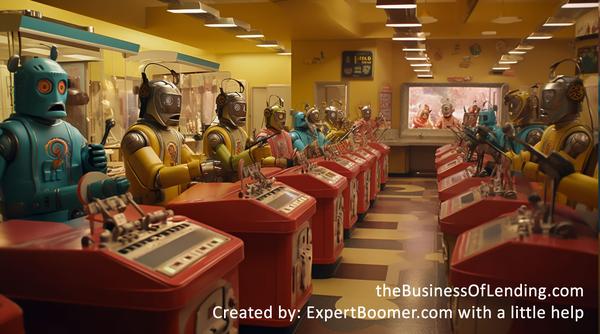- Goodbye to the 36% APR Cap? Loosening rate caps mean lenders can finally extend a lifeline to high-risk borrowers who’ve long been shut out, ignored, and avoided by banks and credit unions. [Studies, such as one conducted in Illinois, reveal how caps restrict credit access, leaving many consumers in financial deserts.]
- CFPB Overhaul: A softer regulatory stance
will translate to reduced oversight, allowing lenders greater flexibility in underwriting and loan structuring and employing creative solutions for borrowers experiencing a sudden financial emergency. [Car repair to keep their job, a utility bill payment to avoid having their gas shut off, a “reconnection fee,” a medical prescription…]
Expanding Horizons
A deregulated environment will
unlock broader market opportunities:
- Reaching the Unreachable: By removing stringent barriers and extending credit to consumers previously excluded, lenders can continue to serve a broader spectrum of borrowers.
- Profit Potential: Lenders will see margins expand significantly with more latitude in pricing loans according to risk. Imagine an era where fair pricing aligns with consumer needs while driving revenue
growth.
Economic Winds Favor Lending
Several economic factors play a significant role in shaping the lending landscape.
The administration under Donald Trump has strongly emphasized stimulating employment growth and implementing tax reforms,
which will contribute to a more stable financial environment for consumers.
Lower Default Rates? One of the key implications of these policies is the potential for reduced delinquency rates among borrowers.
When disposable income rises due to tax cuts and increased job opportunities, consumers may find it easier to meet their financial obligations.
This is especially important for subprime lenders, who often face higher risks associated with loan defaults.
Improved
consumer financial stability could lead to a decline in the number of loans that fall into arrears, fostering a healthier lending ecosystem.
Stimulating Demand: The administration’s initiatives aimed at tax relief and fostering job creation can also directly impact consumer
spending patterns.
Consumers with more disposable income are more likely to spend, creating a favorable environment for short-term loans and installment credit options.
This increased demand for
credit could encourage lenders to expand their offerings to meet the growing appetite for consumer loans, thereby driving further economic activity.
Immigration? A Mixed Bag:
The question of immigration presents a nuanced challenge.
On the one hand, reducing the number of available workers can lead to decreased consumer demand,
which might temper the overall appetite for loans.
On the other hand, a tighter labor market could result in upward pressure on wages.
Higher wages may empower consumers to take on additional
credit, creating a complex interplay we lenders must navigate.
While fewer workers might dampen demand, the potential for increased earnings among existing workers could balance this effect, leading to a dynamic lending environment.
Leadership Shifts: A Game-Changer?
Leadership changes within regulatory bodies like the CFPB will usher in a more industry-friendly regulatory philosophy.
If that happens, it will lead to:
- Reduced Compliance Costs: A streamlined framework would allow lenders to allocate resources more effectively. [HUGE for us.]
- Collaborative Innovation: Imagine a CFPB that works alongside lenders to
create solutions rather than obstacles. [Fat chance.]
Navigating the Landscape Ahead
While these shifts present promising opportunities, we must tread carefully.
The potential for backlash from advocacy groups to state legislative challenges
means that transparency and consumer education are more vital than ever.
In an era of increased freedom, we must anchor ourselves in ethical lending practices to ensure sustainable growth.
Final Thoughts:
President Trump’s reelection signals a new
era for our consumer lending industry.
By adapting to regulatory changes, broadening our market, and innovating, we will thrive while serving the 60%+ Americans living paycheck-to-paycheck.
Our
road ahead is golden!
Millions of credit-challenged consumers demand access to our loan services!
And we’re here to serve them!
Final Final Thoughts:
Financial literacy education is crucial for equipping subprime consumers with essential tools to succeed in today’s world.
I believe programs from agencies like the FDIC, non-profits like Operation HOPE, and even some for-profit companies are nothing more than a sham.
They exist to line the pockets of bureaucrats and cronies, feeding off taxpayer money while doing little to help the people they claim to serve.
Our schools and parents must take responsibility for
this critical task!
Teaching personal finance from an early age is essential.
Why don’t our schools offer basic finance education? Who benefits from neglecting this crucial topic?
Is it the bureaucrats’ intention to keep us all in perpetual debt? Your answer to this question is here: Read “Debt, the First 5000 Years!”



